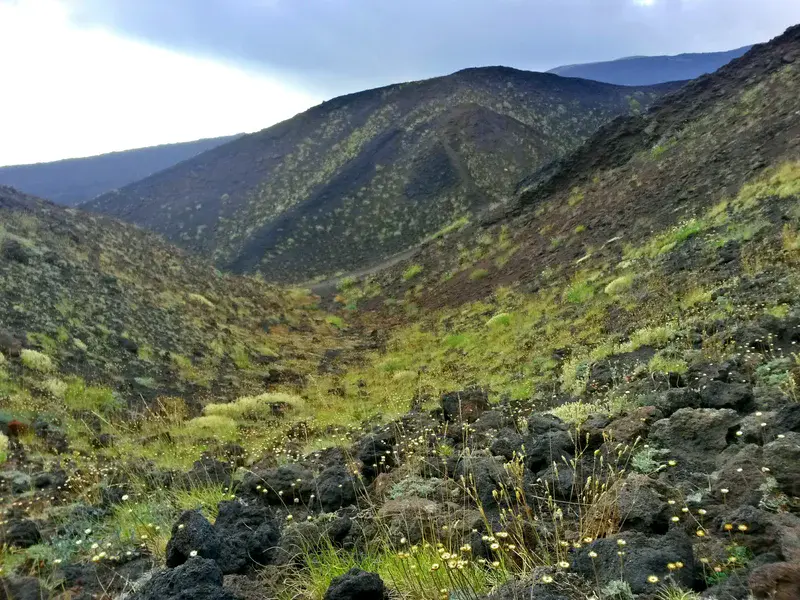
Volcanic vegetation
by Alicia Morugán, Miguel Hernández University, Elche, Spain
Etna has been defined as "the biggest naturalistic laboratory in the world". The extremely rich and various vegetation conditions the countryside and offers continuous and also sudden changes; this depends on the different consistencies and the continuous readaptation of the sublayer due to lava flows which occur from time to time.
A consequence of the adaptation to the environment of the high parts of Mount Etna is a calcareous grasslands (ability to survive in drought conditions) more or less marked, and a typical morphology of entities, grouped in highly specialized plant associations to the pedoclimatic consequences, and consequent tendency to assume the same posture pulviniforme and somewhat prickly, by reduction and transformation of leaves. It, thus, creates the conditions most suitable for an efficient resistance to the deficit between availability of water from soil and leaf loss by transpiration.
Other characters such as the impressive development of radical volcanic body aimed at finding a sufficient amount of water from deeper soil layers also, the significant reduction and flattening of the ground portion of the entire air (pulvini vegetation), the metamorphosis of the leaf apparatus is capable of reducing water loss by transpiration, a strict metabolic control is particularly specialized in the photosynthetic cycle and respiration, made of the plants of this particular environment of the Mount Etna an unequal source of data for the study of the adaptations to the environment of the vegetables of dry areas and their productivity in extreme resistance conditions.
Categories
- Geochemistry, Mineralogy, Petrology & Volcanology (990)
- Geodynamics (372)
- Interdisciplinary/Other (841)
- Natural Hazards (526)
Location
- Europe (3893)
- Southern Europe (1691)
- Italy (433)
- Exact location (14.9794 E, 37.7613 N)
Tags
Colours
Image properties
3264 × 2448 px;
image/jpeg; 2.1 MB
Camera:
Samsung GT-I9195
Taken on 23
August
2015
Submitted on 23 August 2015
Licence
Creative Commons Attribution 3.0 Unported (CC BY 3.0)
Credit
Alicia Morugán (distributed via imaggeo.egu.eu)
Share
Appreciate
Report